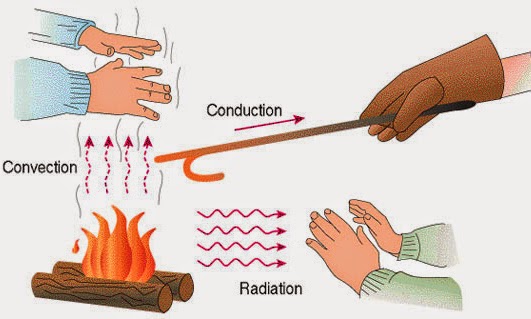Heat is a form of energy which transfers between bodies which are kept under thermal interactions. When a temperature difference occurs between two bodies or a body with its surroundings, heat transfer occurs.
Heat transfer occurs in three modes:
1) Conduction 2) Convection and 3) Radiation
1) Conduction 2) Convection and 3) Radiation
Conduction :
In Conduction, heat transfer takes place due to temperature difference in a body or between bodies in thermal contact, without mixing of mass. The rate of heat transfer through conduction is governed by the Fourier's law of heat conduction.
Q = -kA(dT/dx)
Where: Q is the heat flow rate by conduction
K is the thermal conductivity of body material
A is the cross-sectional area normal to direction of heat flow and
dT/dx is the temperature gradient of the section.
A is the cross-sectional area normal to direction of heat flow and
dT/dx is the temperature gradient of the section.
Convection :
In convection, heat is transferred to a moving fluid at the surface over which it flows by combined molecular diffusion and bulk flow. Convection involves conduction and fluid flow. The rate of convective heat transfer is governed by the Newton's law of cooling.
Q = hA(Ts-T∞)
Where: Ts is the surface temperature
T∞ is the outside temperature
h is the coefficient of convection
h is the coefficient of convection

Radiation:
In radiation, heat is transferred in the form of radiant energy or wave motion from one body to another body. No medium for radiation to occur. The rate of heat radiation that can be emitted by a surface at a thermodynamic temperature is based on Stefan-Boltzmann law.
Q = σT⁴
Where: T is the absolute temperature of surface
σ is the Stefan-Boltzmann constant.

No comments:
Post a Comment